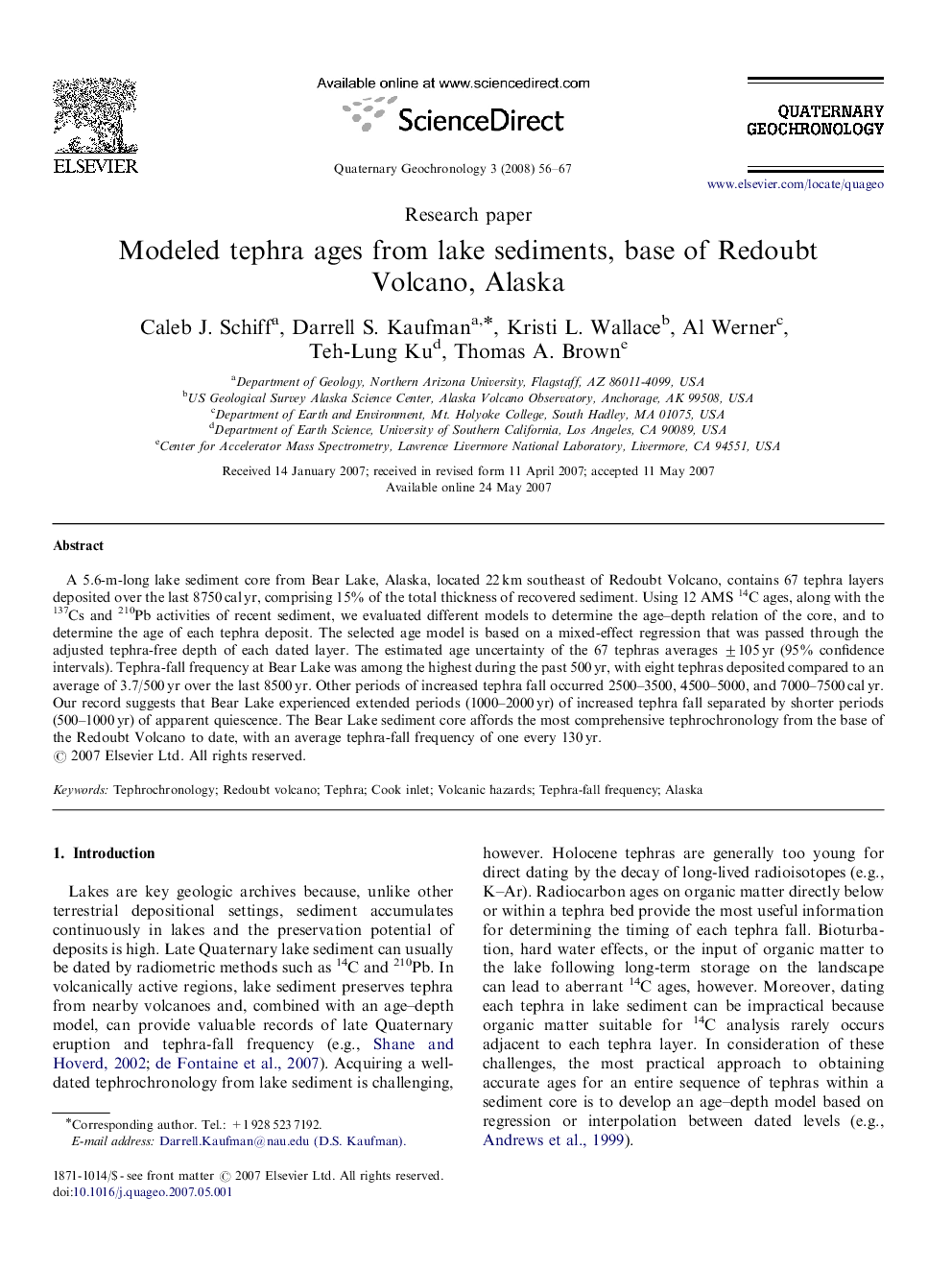| Article ID | Journal | Published Year | Pages | File Type |
|---|---|---|---|---|
| 6442727 | Quaternary Geochronology | 2008 | 12 Pages |
Abstract
A 5.6-m-long lake sediment core from Bear Lake, Alaska, located 22 km southeast of Redoubt Volcano, contains 67 tephra layers deposited over the last 8750 cal yr, comprising 15% of the total thickness of recovered sediment. Using 12 AMS 14C ages, along with the 137Cs and 210Pb activities of recent sediment, we evaluated different models to determine the age-depth relation of the core, and to determine the age of each tephra deposit. The selected age model is based on a mixed-effect regression that was passed through the adjusted tephra-free depth of each dated layer. The estimated age uncertainty of the 67 tephras averages ±105 yr (95% confidence intervals). Tephra-fall frequency at Bear Lake was among the highest during the past 500 yr, with eight tephras deposited compared to an average of 3.7/500 yr over the last 8500 yr. Other periods of increased tephra fall occurred 2500-3500, 4500-5000, and 7000-7500 cal yr. Our record suggests that Bear Lake experienced extended periods (1000-2000 yr) of increased tephra fall separated by shorter periods (500-1000 yr) of apparent quiescence. The Bear Lake sediment core affords the most comprehensive tephrochronology from the base of the Redoubt Volcano to date, with an average tephra-fall frequency of one every 130 yr.
Related Topics
Physical Sciences and Engineering
Earth and Planetary Sciences
Geochemistry and Petrology
Authors
Caleb J. Schiff, Darrell S. Kaufman, Kristi L. Wallace, Al Werner, Teh-Lung Ku, Thomas A. Brown,
